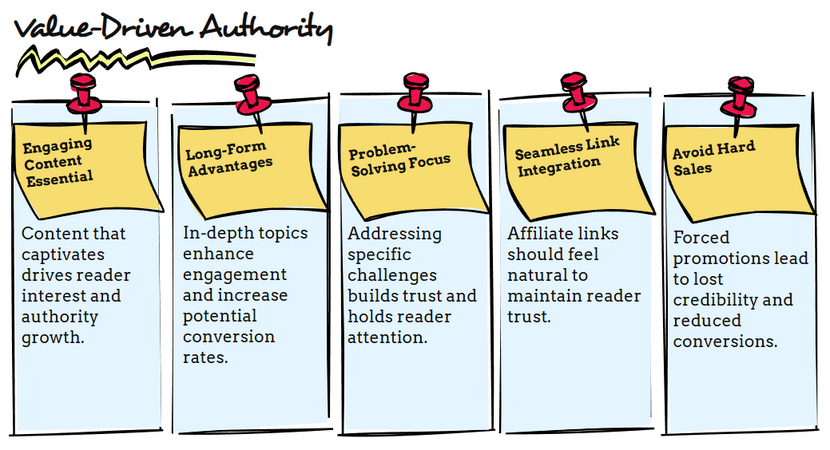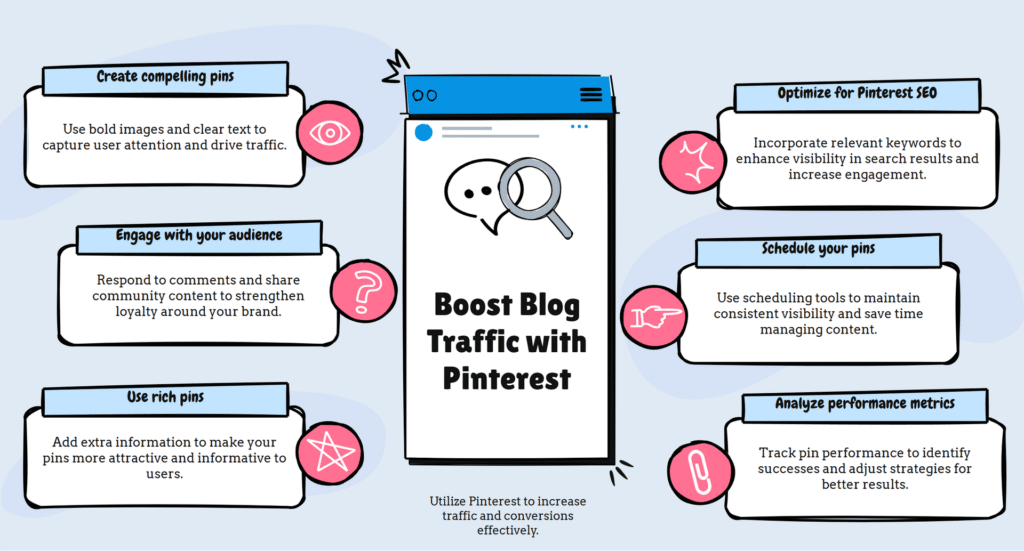
Blog success depends on how effectively you attract and engage your audience. If you want to see real, measurable growth in just three months, implementing the right strategies is imperative. In this guide, you’ll discover actionable methods to boost your affiliate blog traffic, maximize your visibility, and increase your income. These proven tactics focus on optimizing your content, leveraging key platforms, and refining your approach so that you confidently scale your affiliate blog faster than ever.
Unleashing Your Potential: Strategies That Deliver
Now that you understand the importance of targeted strategies, let’s dive into what really works. Each method we’ll explore is backed by experience and results. But first, let me introduce a valuable resource: our SEO Traffic Boosting Template. This tool is designed to streamline your efforts and shape your approach. It simplifies the process of optimizing your content and helps you track your progress effectively.
With this template, you’ll have a clear roadmap to follow as you implement the strategies outlined in this guide. Each tactic builds on the last, creating a solid foundation for sustainable growth.
Let’s break down these proven methods. They range from content optimization techniques to leveraging social media platforms. Each section is crafted to ensure you can apply what you learn immediately. By the end, you’ll not only see increased traffic but also a clearer path to achieving your affiliate marketing goals.
Now, let’s get started on the first strategy.
Key Takeaways:
- Implement on-page SEO techniques such as keyword research, internal linking, and improving page speed to boost organic search traffic.
- Create valuable, long-form content that addresses readers’ needs while incorporating affiliate links to establish authority and attract loyal visitors.
- Use Pinterest and other social media platforms to drive targeted traffic through visually appealing promotions and consistent post sharing.
- Build and segment an email list to nurture leads with personalized communications that enhance visitor retention and conversions.
- Regularly analyze site performance with tools like Google Analytics to identify successful tactics and optimize your affiliate marketing strategy accordingly.
Search Engine Domination: Your Organic Traffic Catalyst

To genuinely boost your affiliate blog traffic, embracing search engine domination is imperative. By optimizing your site for organic search, you attract high-quality visitors actively seeking your content. This approach not only reduces dependency on paid ads but also builds long-term authority and consistent traffic. When you prioritize search engine optimization, your blog becomes a reliable channel for affiliate conversions, setting a strong foundation for scalable growth in the competitive affiliate marketing space.
Crafting SEO-Optimized Content That Converts
Your content must be crafted with both search engines and readers in mind to drive real results. Focus on integrating targeted keywords naturally, answering specific user intent, and providing actionable solutions. SEO-optimized content that converts combines thorough research with engaging writing, ensuring visitors stay longer and click your affiliate links. This balance turns casual readers into loyal buyers and sharpens your competitive edge.
Essential On-Page Strategies for Maximum Visibility
On-page SEO elements shape how search engines interpret and rank your pages. By optimizing titles, meta descriptions, header tags, and URL structures, you enhance your blog’s visibility and improve click-through rates. Additionally, implementing internal linking guides visitors through your content, increasing engagement, while fast page load speeds prevent high bounce rates. Applying these strategies strategically aligns your pages with search intent, helping you climb search rankings faster.
Beyond crafting solid content, imperative on-page strategies serve as the backbone of your SEO success. Titles and meta descriptions act as your blog’s first impression in search results, directly influencing whether users click through. Proper use of header tags not only structures your content but signals its relevance to Google. Internal linking builds a web of related articles, distributing authority and keeping readers engaged longer, which positively impacts ranking signals. Importantly, your site’s speed and mobile-friendliness can make or break user experience, impacting your bounce rate and overall SEO performance. Ignoring these details risks losing potential traffic to faster, more optimized competitors.
Content That Captivates: Building Authority Through Value

To grow your affiliate blog successfully, you need content that not only attracts readers but also builds your authority in your niche. By consistently providing valuable insights and actionable advice, you position yourself as a trusted resource your audience returns to. This approach naturally encourages loyalty and boosts your affiliate income as readers rely on your expert recommendations.
The Art of Long-Form, Problem-Solving Content
Long-form content allows you to dive deep into topics your audience cares about, providing detailed solutions that address their specific challenges. When you focus on answering their questions thoroughly, you create content that keeps visitors engaged longer and increases the chance of conversions. This in-depth approach sets your blog apart and strengthens your authority.
Integrating Affiliate Links Naturally and Effectively
Including affiliate links should feel like a seamless part of your content, not a sales pitch. When you weave links into relevant, helpful information, you maintain your readers’ trust and improve click-through rates. Your goal is to highlight how the products you recommend genuinely solve problems without interrupting the flow of your writing.
Integrating affiliate links naturally is necessary to keep your readers engaged and trusting your recommendations. If links appear forced or overly promotional, you risk losing credibility and reducing conversions. Instead, you want to embed links where they provide real value—such as within step-by-step guides, product comparisons, or personal anecdotes. This creates a positive user experience while encouraging readers to take action. Be mindful to balance your affiliate links with substantial content, so the focus remains on helping your audience first and foremost.
Visual Traffic Surge: Harnessing the Power of Pinterest

Pinterest is a visual discovery engine that can drive highly targeted traffic to your affiliate blog quickly and effectively. By sharing compelling pins linked to your content, you tap into a vast audience actively searching for ideas and solutions. Leveraging Pinterest’s unique platform allows you to boost your blog’s visibility and attract readers who are more likely to engage with your affiliate offers, making it an important traffic source in your growth strategy.
Designing Click-Worthy Pins That Convert
Creating pins that grab attention is key to driving traffic from Pinterest. Use bold, clear images combined with concise, benefit-driven text overlays to make your pins stand out. Incorporate your brand’s colors and fonts to build recognition, and design pins vertically to fit Pinterest’s preferred dimensions. A well-crafted pin entices users to click through to your blog, increasing your chances of engagement and affiliate conversions.
Best Practices for Pinterest SEO and Engagement
Optimizing your pins with relevant keywords in titles, descriptions, and boards increases your chances of appearing in Pinterest search results. Engage with your audience through comments and repins to build community and trust. Scheduling consistently, using rich pins, and analyzing performance help refine your strategy for maximum growth.
Focusing on Pinterest SEO means carefully selecting keywords that resonate with both your audience and current trends, improving your content’s discoverability. Engaging actively with your followers by responding to comments and repinning their content builds a loyal community around your blog. Using tools to schedule pins ensures your content remains consistently visible without manual effort, helping you maintain momentum. Implementing rich pins adds extra information to your posts, making them more appealing and clickable. Tracking analytics allows you to identify top-performing pins and optimize underperforming ones, ensuring your Pinterest strategy continuously supports your affiliate growth.
Consistency is Key: Establishing a Winning Posting Schedule
To truly double your affiliate blog traffic, you need to commit to a consistent posting schedule. By publishing content regularly, you build trust with your audience and signal to search engines that your blog is active and valuable. Consistency not only helps you stay organized but also keeps your readers engaged, making them more likely to return and share your content. When you set a clear schedule, you create momentum that propels your blog growth and maximizes affiliate revenue opportunities.
The Benefits of Regular Content Release
Releasing content regularly keeps your blog fresh and increases visibility, which boosts organic traffic. It helps you maintain audience interest by delivering steady value and encourages visitors to check back often. Search engines favor sites with consistent updates, improving your ranking potential. Additionally, frequent posts increase your chances of targeting diverse keywords and niches, amplifying your reach and affiliate conversions.
How to Create and Maintain a Content Calendar
A well-structured content calendar is your best tool for maintaining consistency. It helps you plan topics, deadlines, and publishing dates, preventing last-minute rushes and content gaps. By organizing your schedule ahead of time, you sustain momentum and ensure every post aligns with your growth goals. Using tools like Google Sheets or project management apps can simplify tracking and keep you accountable.
Creating and maintaining a content calendar involves more than just jotting down dates — it requires strategic planning and regular review. Start by mapping out content themes that align with your audience’s interests and affiliate products. Prioritize balance between evergreen and timely posts to keep your blog relevant and discoverable. You should also factor in time for keyword research and optimizing each piece. Failing to adhere to your calendar can stall your growth, so build in buffer days to handle unexpected delays. Updating your calendar as you analyze traffic and engagement trends will help you continuously refine your posting strategy and maximize effectiveness.
Email Marketing Mastery: Nurturing Your Leads
Email marketing remains one of the most effective ways to boost your affiliate blog traffic and sales. By consistently engaging your audience through targeted emails, you nurture leads into loyal customers. You can increase conversions by delivering valuable content, exclusive offers, and timely updates that keep your readers connected to your blog and affiliate products. Mastering this channel ensures you’re building strong relationships that turn casual visitors into repeat buyers.
Building an Engaged and Segmented Email List
To get the most from email marketing, focus on building an email list that’s both engaged and segmented. By segmenting your subscribers based on interests, behaviors, or demographics, you can send content that resonates directly with their needs. This boosts open rates, click-throughs, and affiliate conversions. Engaged subscribers are more likely to trust your recommendations, making your email list a powerful asset for sustained affiliate growth.
Creating Personalized Campaigns That Drive Sales
Personalized email campaigns are key to turning your subscribers into buyers. Tailoring your messages based on user data, such as past interactions or preferences, helps you deliver relevant offers that speak directly to their desires. This approach increases engagement and significantly improves your chances of affiliate sales, as your audience feels understood and valued.
Personalization elevates your email marketing by crafting unique experiences for each subscriber. When you use dynamic content, segment-specific offers, and behavioral triggers, you create campaigns that respond directly to your audience’s needs and buying signals. However, neglecting personalization can lead to generic messages that get ignored or marked as spam, severely hurting your affiliate conversions. Leveraging tools like automation and data analytics empowers you to refine your campaigns continuously, boosting engagement and maximizing the ROI of your email marketing efforts. Consistently delivering relevant, timely content ensures your emails remain a trusted channel driving steady affiliate income.
Backlink Brilliance: Elevating Your Blog’s Authority
Building high-quality backlinks is one of the most effective ways to increase your blog’s authority and search engine rankings. When reputable sites link to your content, it signals Google that your blog is a trustworthy resource. This can lead to higher organic traffic and better affiliate conversions. Focus on earning backlinks from relevant, authoritative websites to make a lasting impact on your affiliate blog’s growth.
Strategies for Earning Quality Backlinks
To earn quality backlinks, create link-worthy content like in-depth guides, original research, or useful tools that others want to reference. Engage with influencers and bloggers in your niche through social media and industry forums to build relationships naturally. You can also offer to review products or services related to your blog in exchange for a backlink. Prioritize backlinks from trusted sources over quantity to avoid penalties and strengthen your blog’s reputation.
Guest Blogging and Collaborative Opportunities to Increase Visibility
Guest blogging and collaborations give you direct access to new, targeted audiences while building backlinks that enhance your blog’s authority. By contributing valuable content to relevant sites, you position yourself as an expert and generate referrals back to your own blog. Partnerships with complementary bloggers or brands can also lead to co-created content, expanding your reach and creating multiple points of engagement for readers.
Guest blogging offers you a powerful platform to showcase your expertise beyond your own website, connecting you with readers who may have never discovered your blog otherwise. When you write for established blogs in your niche, you receive authoritative backlinks and direct traffic that can significantly boost your affiliate sales. Additionally, collaborative opportunities such as joint webinars, podcasts, or content swaps allow you to tap into the existing audiences of other creators, increasing your visibility and credibility. Be selective about who you partner with—opt for collaborations that align with your blog’s focus and values to maintain relevance and maximize impact.
Final Words
Now that you have these proven strategies to double your affiliate blog traffic in 90 days, it’s time to put them into action. By optimizing your SEO, mastering content marketing, leveraging Pinterest and email, and continually analyzing your results, you’ll steadily grow your audience and boost your affiliate income. Stay consistent and focused, and you’ll see meaningful progress as your blog gains authority and attracts more targeted visitors. Your commitment to these tactics will transform your affiliate blogging journey and maximize your success.
FAQ
Q: How important is SEO for increasing affiliate blog traffic?
A: SEO plays a significant role in driving organic traffic to your affiliate blog. By focusing on on-page SEO tactics like keyword research, optimizing page speed, and building internal links, you improve your chances of ranking higher on search engines like Google. High rankings bring more targeted visitors who are interested in your content and affiliate offers, ultimately boosting your traffic and conversions.
Q: What type of content should I create to attract more visitors to my affiliate blog?
A: Creating valuable, long-form content that addresses your audience’s specific problems or questions is highly effective. This positions you as an authority and keeps readers engaged. Including affiliate links naturally within helpful and informative posts encourages clicks without appearing overly promotional, leading to increased traffic and higher affiliate income.
Q: How can Pinterest help drive traffic to my affiliate blog?
A: Pinterest functions as a visual discovery platform where users search for ideas and solutions. Designing eye-catching pins that link directly to your affiliate blog posts can generate targeted traffic quickly. Since Pinterest users often have strong purchase intent, leveraging this platform boosts your chances of attracting quality visitors who are more likely to convert.
Q: What role does email marketing play in growing affiliate blog traffic?
A: Email marketing allows you to build a direct line of communication with your audience. By segmenting your list and sending personalized emails, you can nurture relationships and promote your affiliate offers more effectively. This ongoing engagement encourages repeat visits and higher conversion rates, contributing to sustained traffic growth on your blog.
Q: Why should I focus on long-tail keywords for my affiliate site?
A: Long-tail keywords are more specific search phrases that usually have less competition but higher intent from searchers. Targeting these keywords helps attract visitors who are closer to making a purchasing decision, resulting in better conversion potential. Additionally, ranking for long-tail terms can be easier, allowing you to steadily increase your affiliate blog traffic.
